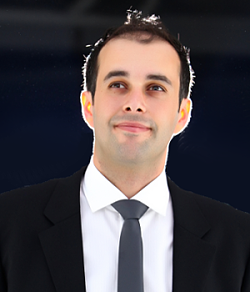 People always ask me what are the best usability applications on the market, and the answer is always a question. “What do you want to do with the application?”
People always ask me what are the best usability applications on the market, and the answer is always a question. “What do you want to do with the application?”
Usability isn't everything. You can provide a singular application that follows all the ten Nielsen's heuristics, but in the end, nobody likes it.
Usability is just a piece of the puzzle. The perfect recipe combines best-of-breed HCI guidelines, superior design, focused functionalities, and creativity. Following the guidelines is somewhat easy and, though more subjective, a consensual superior design can be agreed upon after a few interactions. Providing focused functionalities can be a bigger challenge. The same functionality can be used by multiple users with different roles, different business domain knowledge, and different levels of expertise. One size doesn’t fit all in modern applications. Personalized user experiences are the path to success. The recent movie “Her” takes this to another level, but also pinpoints this path.
So the million dollar question is, “How do I create a memorable and personalized user experience for my application?” This is the moment where I challenge the philosopher Socrates. Socrates said, "Know thyself.” I say "Know your users.” An in depth of knowledge your users is the only way to build personalized experiences. Anticipate the user’s next step, remove unnecessary steps from the software, show answers when the user will need them, display notifications to user only when needed. All of this is achievable when you start to feel the needs the same way your users feel it - it's not by understanding their needs, is by feeling their needs.
Having a development or implementation methodology that embraces the users’ needs by feeling them challenges everyone to include Personas. Personas are a great tool to challenge your ability to increase users’ goodwill (and if you need to give it a touch of reality please don't feel awkward on wearing the sunglasses). Try to make Personas as real as possible, and if you have a real life inspiration, the better your persona will be. Personas are users. They have neither the compassion, nor the goodwill to handle bugs and issues. They will constantly push you to improve your current solution, and in the end they must be a part of the great novel - a coherent one!
The first experience I had with the use of a Persona was in one of the Norman Nielsen's Usability courses. The trainer appeared in the room wearing a pair of Aviator sunglasses (I’m not going to mention the brand, but it's easy to guess it; yes, that one...), a scarf, and a rough aviator jacket. The class immediately began to laugh at the Persona. The trainer started talking like a real Aviator (with a Texas accent), and he began to discuss the needs of amateur aviators and factors that would prevent them from having a profitable business. And in that moment the whole room felt like an aviator, too, and writing user stories became so easy that in the end, the amateur aviator seemed more professional than the business one. What the trainer did was create a Persona through personification. Humans react better to and are more likely to help on stories narrated in the 1st person (i.e., personal stories).
How can you be sure that your Persona is a good one? You must test the outcome of your projects with usability tests on real users. These tests will ensure that you have a strong connection with the real world and that your Personas provided the adequate requirements and assumed the correct reactions. Even if you completely misjudged it, you can be sure that your Personas will be more accurate on the next project or iteration. After the tests, you will fix most impactful issues to the complete experience, and test it again until the whole experience is working seamlessly. The more users you include in your test, the better your final result will be.
Personas and usability testing are an integral component of WeDo Technologies’ product development cycle and have helped shape RAID7 into the product it is. We cannot even begin to express our gratitude to the real-world usability testing users that continuously help us improve the usability of our software, and to Jane Bullock, Alan Williams, Rob Dickens, Layna Fisch, Tom Powell and Mike Con (our favorite Personas)!



Let Us Know What You Thought about this Post.
Put your Comment Below.